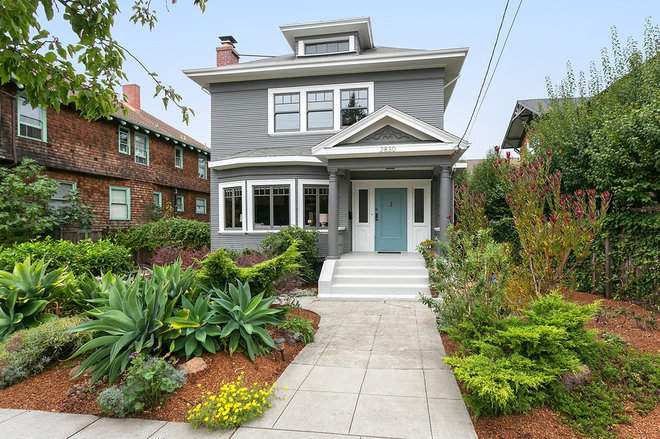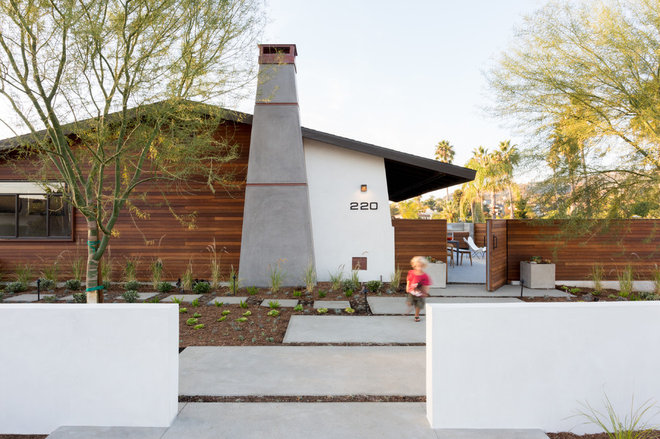Embarking on a house hunt is a little like planning a wedding — both require insane attention to detail and lead to what we hope will be a satisfying long-term commitment. So grab that clipboard and channel your inner wedding planner: It’s time to get organized with these 10 take-along essentials for your search.
1. List of properties you plan to visit. It makes sense to cluster your home search by neighborhood, so you won’t be driving back and forth across town. If you think a visual aid might help you remember which house was which, circle the addresses on a printed map and number the properties to correspond with your notes.
2. Notepad and pen. Whether you want to make general notes on what you thought of each home or sketch out a quick floor plan so you don’t forget later, a notepad and pen are key. Note what you like as well as what you don’t like about each home, and then review your notes once you’ve had a chance to rest. Of course if you prefer to take notes digitally, that’s fine. Go with whatever makes you comfortable.
3. Slip-on shoes. Taking shoes off is sometimes requested, both at private showings and open houses, so it helps to be prepared. Wear shoes that are easy to slip on and off, and nice, comfy socks to keep your feet warm.
4. Checklist. Facing a day packed with open houses can leave the best of us feeling flustered. Come prepared and stay focused by bringing a checklist with the main points you want to remember to look for at each property. When you get home, this will also make it much easier to do a side-by-side comparison of the houses you saw.
5. Camera. Your smartphone is completely fine and may even be preferable to a big, clunky camera for this purpose. With permission, aim to snap a photo of the front of each house you visit, plus each main room. Then you can share the photos with someone who couldn’t be at the showing, or use them to refresh your own memory when all those properties start to blend together.
6. Helpful apps. Downloading an app or two before you leave on your house hunt can enhance your search. From traditional real estate apps that help you search homes for sale, to more specialized apps like Sun Surveyor, which can help you understand the solar orientation of a home (which could be important if you’re hoping to use solar power), pick one or two that will helpfully fill a niche in your search.
6. Helpful apps. Downloading an app or two before you leave on your house hunt can enhance your search. From traditional real estate apps that help you search homes for sale, to more specialized apps like Sun Surveyor, which can help you understand the solar orientation of a home (which could be important if you’re hoping to use solar power), pick one or two that will helpfully fill a niche in your search.
7. Measurements. Do you have a piano, large painting or big piece of furniture that you would be heartbroken were it not to fit in the new place? Measure it before you begin house-hunting and bring the measurements — and a measuring tape — with you when you view properties. There’s no need to break out the measuring tape at every open house, but when you’re seriously interested in a particular house, it can be worth getting to this level of detail.
8. Flashlight. When you want to get a closer look in that dark basement or scope out the potential of an unfinished attic, the built-in flashlight on your phone will get you only so far. You may not end up using it, but a small but powerful flashlight is a smart extra to have stashed in your bag, just in case.
9. Stakeholders. There’s certainly an argument to be made for not bringing kids along on those initial house-hunting trips. Having little ones fall in love with a home that won’t work for you will only make tough decisions harder to make. However, once you’ve narrowed down the search to a handful of solid choices, getting input from everyone who will be living in the house is invaluable.
In fact, just having your kids (or parents, if you’ll be sharing a multigenerational home) along may help you see things you wouldn’t normally notice, like potential safety or accessibility issues — or positives, like a great tree in the backyard perfect for fort-building.
In fact, just having your kids (or parents, if you’ll be sharing a multigenerational home) along may help you see things you wouldn’t normally notice, like potential safety or accessibility issues — or positives, like a great tree in the backyard perfect for fort-building.
10. Personal priorities. When it comes to homebuying, it’s nearly impossible to get everything on your wish list — and it’s easy to get charmed by special features that you hadn’t even considered (“Oooh, a pool would be nice!”). This is where your personal priorities come in. Make a list of your top three to five priorities in a house, and refer to this list when you’re comparing the homes you’ve seen.



No comments:
Post a Comment